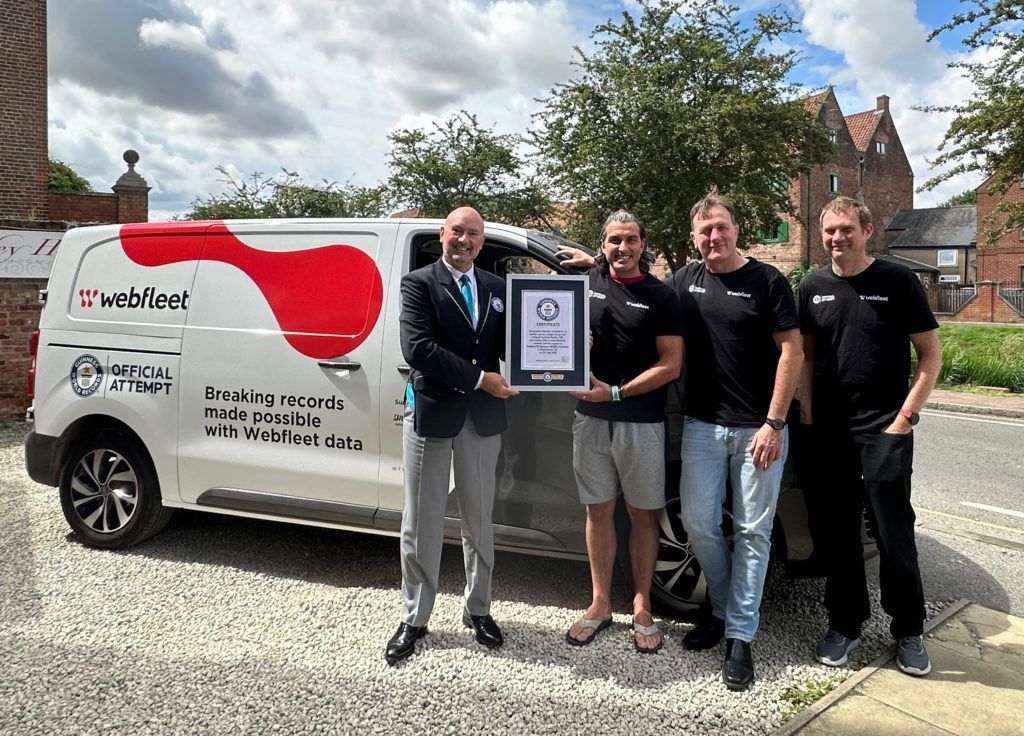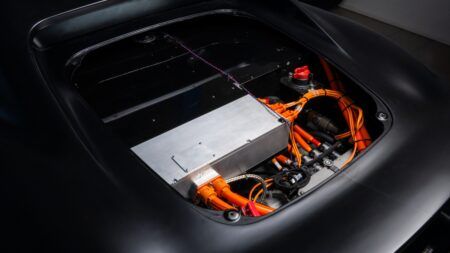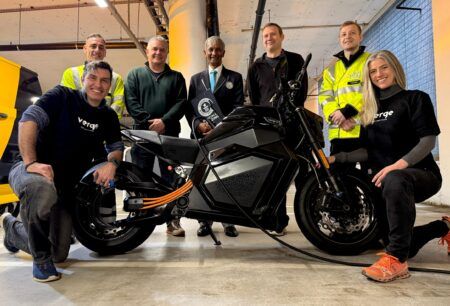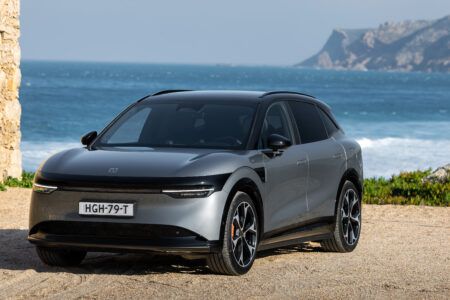Webfleet, Bridgestone’s globally trusted fleet management solution, has smashed the Guinness World Records title for the greatest distance travelled by an electric van on a single charge – 311.18 miles (500.8 km). The record-breaking feat was achieved by Webfleet-sponsored drivers Kevin Booker, Sam Clarke, and Fergal McGrath in a Fiat E-Scudo, fitted with energy-efficient Bridgestone Duravis tyres.
Independently verified video footage, odometer, GPS, and battery level data from Webfleet revealed that the compact van, with a 75kWh battery and a WLTP of 205 miles, averaged 4.5 miles per kilowatt hour (kWh) on a circular route across Cambridgeshire, Lincolnshire, and Northamptonshire. The journey took 13 hours and nine minutes during daylight hours. The Fiat E-Scudo needed no modifications and the route combined urban and rural roads to replicate ‘real world’ conditions. The E-Scudo was specifically chosen for the challenge thanks to its best-in-class range and comfort-first design, which features measures such as a car-like driving position and top-level soundproofing, to minimise jolts and vibrations.
“This remarkable achievement is testimony to the determination and technological ingenuity of all those involved,” said Beverley Wise, Webfleet Regional Director for Bridgestone Mobility Solutions. “We’re thrilled to have become a Guinness World Records title holder. The previous record of 258.85 miles was set in the US, bringing it to the UK is symbolic of our nationwide commitment to become a global leader in e-mobility.”
Webfleet’s chosen tyres for the attempt, Bridgestone Duravis tyres, were seen as a critical component in the world record attempt, offering outstanding mileage and low rolling resistance.
“Connected EV data plays a vital role in electrifying mobility,” said Taco van der Leij, Vice President Fleet Management Solutions Europe for Bridgestone Mobility Solutions, “Enabling business fleets to monitor driver behaviour, compare their energy performance and even analyse kinetic energy recovered through regenerative braking to provide targeted coaching where it’s needed most.”





